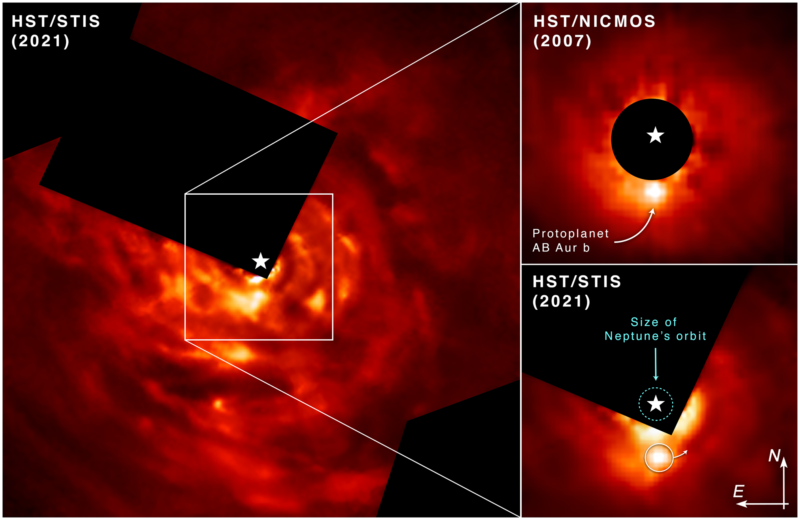On some levels, forming stars and planets is simple: They form where there's more stuff. So, while the raw material for a star may be a diffuse cloud of gas, the distribution of that gas isn't entirely even. Over time, the gravitational pull of areas that had somewhat more material will pull ever more material in, eventually resulting in enough matter to form a star. Or two—in many cases, more than one concentration of matter will form; in other cases, a single concentration will split into two. Planets also form where the matter is, being generated by the disk of material that feeds the forming star.
While this might generally be true, there are a couple of problems with it. For one, there's no clear dividing line between small stars like brown dwarfs and enormous planets we've put in a category called super-Jupiters. And the handful of planets we've been able to image directly appear to be orbiting far from their host star, where there should not be much matter around to drive their formation.
This week, astronomers announced the imaging of a super-Jupiter in the process of forming, far from the star it appears to be orbiting. This suggests the planet is likely forming via a process that typically produces stars and not through the one that produces gas giants like Jupiter.
We’ve been watching you
The star in question is called AB Aurigae, a very young star located about 500 light-years from the Sun. It's embedded in a cloud of gas, some of which is still likely to be falling into the star. Farther out is a cloud of dust. This cloud is thought to be a good candidate for planet formation for a couple of reasons. First: Dust has been cleared from the area closer to the star. Second: The gas in the inner disk has been shaped into spiral arms by gravitational influences.
A team of researchers used telescope time to search for planets at AB Aurigae. And the researchers seemingly found one, now called AB Aurigae b, at roughly 100 Astronomical Units from AB Aurigae (each AU is the typical distance between the Earth and the Sun). That's more than twice the distance between the Sun and Pluto. That location places AB Aurigae b inside the dust ring and in a position where it should be able to create the sort of spiral arms seen in the gas between the dust and the star. That should also be well outside the area where the density of matter is high enough to host normal planet formation.
A look through image archives indicates that we've had indications the planet was there for quite some time. The images clearly indicate that AB Aurigae b is orbiting.
The researchers used modeling to determine what sized planet could produce the light we've seen coming from AB Aurigae b. The models suggest that, while the planet is still likely to be growing, it's already at least four times the mass of Jupiter. An alternate approach to modeling suggests that it's likely to be nine times Jupiter's mass. In either case, the planet definitely fits into the super-Jupiter category.
The imaging also shows some fainter objects that are similar to AB Aurigae b, but even farther out (430 and 580 AUs). These may be additional planets, but we need additional observations to confirm this.
What’s going on here?
So what's going on here? Closer to a host star, gas giants are thought to form by the accretion of a large rocky core which then starts drawing in gas. That adds to the growing planet's mass and enhances its growth further. This runaway growth gets cut off because the gas that feeds it is eventually driven off by the radiation of the young star.
Out at the distances seen here, however, that process is unlikely to work. While more gas should stick around longer, there isn't a high-enough density of material to build a large core. The runaway growth would never start.
The alternative is a process similar to that which creates a binary star system. Random fluctuations in the amount of material cause a concentration of matter that performs a similar function to the rocky core. And because the formation site is far from the star, there's a chance for the growth process to continue longer, producing a super-Jupiter.
Nature Astronomy, 2022. DOI: 10.1038/s41550-022-01634-x (About DOIs).



3175x175(CURRENT).thumb.jpg.b05acc060982b36f5891ba728e6d953c.jpg)

Recommended Comments
There are no comments to display.
Join the conversation
You can post now and register later. If you have an account, sign in now to post with your account.
Note: Your post will require moderator approval before it will be visible.